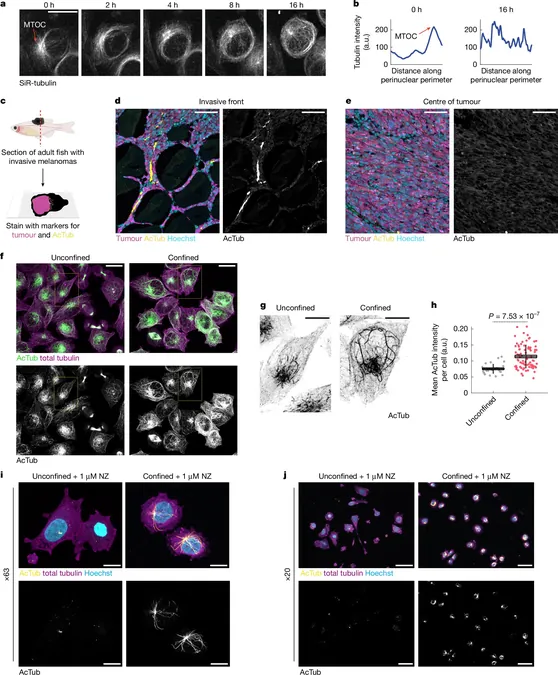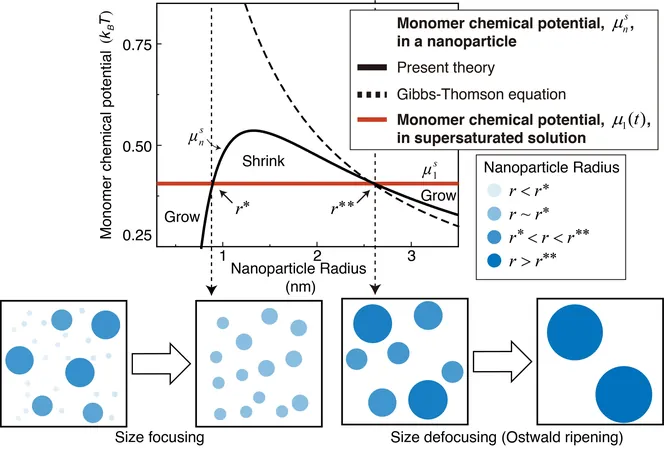
The Shocking Role of Pressure in Cancer Cell Evolution: New Insights into Epigenetics
2025-08-27
Author: Rajesh
Cancer Cells: Adapting to Survive
Cancer cells are famously adaptable, morphing and evolving as they navigate through the body. Their remarkable transformations aren't primarily due to genetic mutations; instead, they are influenced by epigenetic changes—chemical modifications that affect how DNA is folded and expressed.
Epigenetic Changes: The New Frontier in Cancer Research
While previous research suggested that epigenetic modifications stemmed from internal cellular processes, groundbreaking new findings from a team led by Richard White and Miranda Hunter reveal that the physical environment surrounding cancer cells is a critical catalyst for these changes. Published in Nature, their study uncovers how mechanical forces can trigger significant epigenetic transformations.
Zebrafish Study Uncovers Tumor Dynamics
Using a zebrafish model of melanoma, the researchers found that when tumor cells become tightly confined by surrounding tissues, they undergo drastic structural and functional changes. Instead of proliferating wildly, these cells switch to a 'neuronal invasion' program, allowing them to migrate and infiltrate surrounding tissues.
The Key Player: HMGB2 and Its Impact
Central to this transformation is a protein known as HMGB2, which plays a crucial role in DNA organization. The research reveals that HMGB2 responds to mechanical stress by altering how chromatin—the fabric of the genome—is organized, thus revealing regions associated with invasiveness and allowing cancer cells to express these genes more readily. Consequently, cells with elevated levels of HMGB2 become less focused on division and more entrenched in invasion and treatment resistance.
Innovative Responses: How Melanoma Cells Adapt
Interestingly, the team discovered that melanoma cells react to the pressures of confinement by restructuring their internal architecture, creating a cage-like formation around the nucleus. This reorganization involves the LINC complex, a critical structure that links the cytoskeleton to the nuclear envelope, safeguarding the nucleus from potential damage due to external mechanical stress.
Challenges for Cancer Treatment: Understanding the Switch
As White noted, cancer cells can swiftly transition between different states based on environmental signals. This study illustrates how such transitions can be triggered by mechanical forces within a tumor's microenvironment, complicating treatment efforts. Traditional therapies targeting rapidly dividing cells may overlook those that shift to a more invasive and resistant state. By pinpointing the factors driving these switches, researchers aim to develop innovative therapies to thwart or even reverse invasive transformations.
Conclusion: The Unseen Forces Behind Cancer's Evolution
This research emphasizes the instrumental role of the tumor microenvironment in shaping the behavior of cancer cells, highlighting how physical pressures can initiate profound epigenetic changes. The findings serve as a reminder of the complexities of cancer biology and open new avenues for potential therapeutic interventions.



 Brasil (PT)
Brasil (PT)
 Canada (EN)
Canada (EN)
 Chile (ES)
Chile (ES)
 Česko (CS)
Česko (CS)
 대한민국 (KO)
대한민국 (KO)
 España (ES)
España (ES)
 France (FR)
France (FR)
 Hong Kong (EN)
Hong Kong (EN)
 Italia (IT)
Italia (IT)
 日本 (JA)
日本 (JA)
 Magyarország (HU)
Magyarország (HU)
 Norge (NO)
Norge (NO)
 Polska (PL)
Polska (PL)
 Schweiz (DE)
Schweiz (DE)
 Singapore (EN)
Singapore (EN)
 Sverige (SV)
Sverige (SV)
 Suomi (FI)
Suomi (FI)
 Türkiye (TR)
Türkiye (TR)
 الإمارات العربية المتحدة (AR)
الإمارات العربية المتحدة (AR)